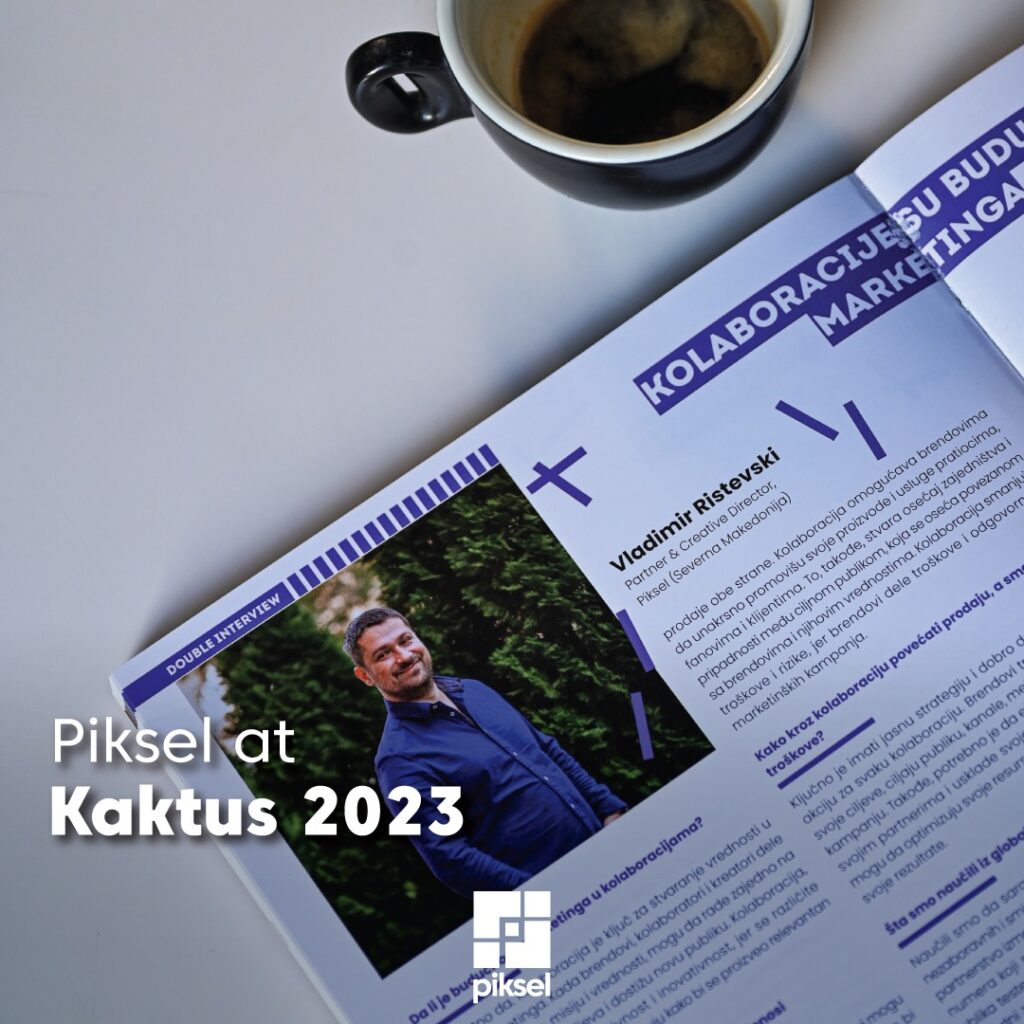Have you ever wondered what’s cooking lately in the world of marketing? Well, guess what? It’s all about collaboration. In this exclusive interview that our Creative Director and Partner in Piksel gave for AdBooka during the 2023 Kaktus Festival, we’ll dive deep into how brands, influencers, and creators are teaming up to redefine success in marketing. Spoiler alert: it’s not just a trend – it’s a game-changer.
From creating kickass campaigns that hit the right notes to forming genuine connections with diverse audiences, collaboration is the secret sauce. We’ll sprinkle in some real-world examples and insights, showing you why this isn’t just a passing phase but a whole new chapter in how brands make their mark. Get ready to learn some more about the magic of marketing!

Is the future of marketing in collaboration?
Absolutely yes. Collaboration is the key to solving problems and creating value in the marketing world. When brands, influencers, and creators share a common vision, mission, and values, they can work together to achieve their goals and reach new audiences. Collaboration also fosters creativity and innovation, as different perspectives and skills are combined to produce engaging and relevant content.
What benefits does this type of cooperation bring to brands?
The main benefit is the synergy that emerges from collaboration. Brands can leverage each other’s strengths, resources, and networks to amplify their message and impact. They can also access new markets, segments, and channels that they might not have reached otherwise. Collaboration also enhances brand awareness, reputation, and loyalty, as customers see the brands as authentic, trustworthy, and socially responsible.
How can collaborations be win-win for both parties?
The most obvious way is by expanding the customer base and increasing the sales of both parties. Collaboration allows brands to cross-promote their products and services to each other’s followers, fans, and customers. It also creates a sense of community and belonging among the target audiences, who feel connected to the brands and their values. Collaboration also reduces costs and risks, as brands share the expenses and responsibilities of marketing campaigns.
How to increase sales and reduce costs through collaboration?
The key is to have a clear strategy and a well-defined call to action for each collaboration. Brands need to identify their objectives, target audiences, channels, metrics, and budget for each campaign. They also need to communicate effectively with their partners and align their expectations and roles. By doing so, they can optimize their resources, avoid duplication, and measure their results.
What have we learned from global and domestic examples? Give an example.
We have learned that collaboration can be a powerful tool for creating memorable and meaningful experiences for customers. A great example is the partnership between Barilla and Spotify, who created a series of playlists that matched the cooking time of different pasta shapes. The playlists were fun, diverse, and convenient for customers who wanted to enjoy music while preparing their meals. Another example is the campaign “The Promise” by Barilla and Roger Federer, who fulfilled the dream of a young fan who challenged him to a tennis match in 2017. The campaign was emotional, inspiring, and viral, as it showed the human side of both brands.



